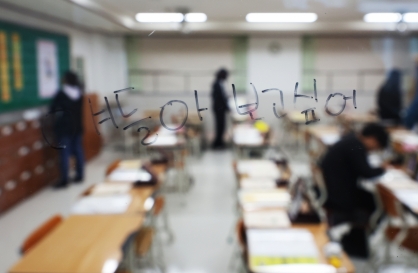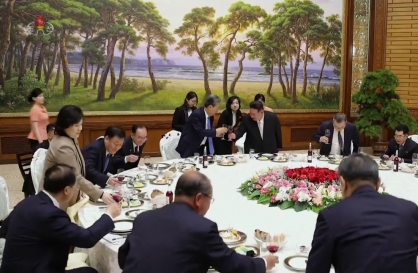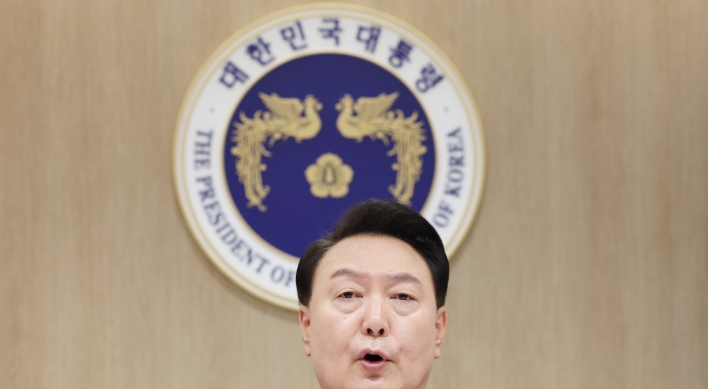[Daniel Moss] Trade was one of Trump’s targets, but he held fire
By BloombergPublished : May 29, 2018 - 17:41
Check your calendars. It‘s starting to feel like Jan. 19, 2017.
For all Donald Trump’s bluster on trade, global commerce today doesn‘t look dramatically different from the day before he was sworn in.
US prestige has certainly taken a beating, but Trump hasn’t dismantled the international trading system. That talk of de-globalization looks overblown. Although it‘s hard to keep track of who’s up and who‘s down on Team Trump, it’s tough to say that over the past 16 months hardliners like Peter Navarro, author of “Death by China,” have won the argument.
The North American Free Trade Agreement remains the law of the land. Tariffs on imported aluminum and steel have so many exemptions you could drive a tractor-trailer through them, and, this week, planned tariffs on China have been placed on hold. Trump withdrew from the Trans-Pacific Partnership, but the pact lives on in hybrid form among American allies.
The Trump administration‘s inaction on trade reminds us that governing isn’t easy. Populists always say otherwise while campaigning. But once elected, there are competing priorities and allies to be satisfied — not to mention the complexities of dealing with China, which isn‘t beholden to the US.
The tax cut Trump once boasted about is a shot of fiscal caffeine near the peak of the domestic economic cycle. That’s likely to increase Americans‘ appetite for imports, much of them coming from … guess where! If you really want to curb America’s trade deficit and its dependence on overseas goods and foreign capital, address the underlying source of that: Insufficient US savings and changes in the global manufacturing topography were set in motion decades ago.
Holding fire on China tariffs might also show how one of the central questions surrounding the Trump presidency has been answered. As I travelled last year, mostly in Asia, the big issue investors, executives and current and former officials wrestled with was whether Trump would make good on promises to essentially end the era of free trade. The other hope was that the power of global supply chains and the inter-locking nature of economic relationships would stay his hand.
As 2017 wore on, some of the audience intuited the world had dodged a bullet. As bad as the rhetoric was, the absolute worst hadn‘t come to pass. That sanguine view got a jolt in March with tariffs on steel and aluminum, followed by a grand announcement of actions against China. Less than grandly, tariffs have gone nowhere. The consultation period did its job; passions cooled and the appetite for conflict waned.
Trump did get some wins from the skirmish, including a Chinese pledge to buy more US agriculture and energy. And the process did underscore Trump’s reputation for tactical unpredictability, something he no doubt loves.
And yet here we are: Trade is bruised but not incapacitated. Lots could still go wrong. Nafta could be ripped up in a fit of pique. Tariffs on China could still be instituted. But until then, the trade skirmish remains just a skirmish, and the administration‘s big talk remains just talk.
Daniel Moss
Daniel Moss writes and edits articles on economics for Bloomberg Opinion. -- Ed.
(Bloomberg)
For all Donald Trump’s bluster on trade, global commerce today doesn‘t look dramatically different from the day before he was sworn in.
US prestige has certainly taken a beating, but Trump hasn’t dismantled the international trading system. That talk of de-globalization looks overblown. Although it‘s hard to keep track of who’s up and who‘s down on Team Trump, it’s tough to say that over the past 16 months hardliners like Peter Navarro, author of “Death by China,” have won the argument.
The North American Free Trade Agreement remains the law of the land. Tariffs on imported aluminum and steel have so many exemptions you could drive a tractor-trailer through them, and, this week, planned tariffs on China have been placed on hold. Trump withdrew from the Trans-Pacific Partnership, but the pact lives on in hybrid form among American allies.
The Trump administration‘s inaction on trade reminds us that governing isn’t easy. Populists always say otherwise while campaigning. But once elected, there are competing priorities and allies to be satisfied — not to mention the complexities of dealing with China, which isn‘t beholden to the US.
The tax cut Trump once boasted about is a shot of fiscal caffeine near the peak of the domestic economic cycle. That’s likely to increase Americans‘ appetite for imports, much of them coming from … guess where! If you really want to curb America’s trade deficit and its dependence on overseas goods and foreign capital, address the underlying source of that: Insufficient US savings and changes in the global manufacturing topography were set in motion decades ago.
Holding fire on China tariffs might also show how one of the central questions surrounding the Trump presidency has been answered. As I travelled last year, mostly in Asia, the big issue investors, executives and current and former officials wrestled with was whether Trump would make good on promises to essentially end the era of free trade. The other hope was that the power of global supply chains and the inter-locking nature of economic relationships would stay his hand.
As 2017 wore on, some of the audience intuited the world had dodged a bullet. As bad as the rhetoric was, the absolute worst hadn‘t come to pass. That sanguine view got a jolt in March with tariffs on steel and aluminum, followed by a grand announcement of actions against China. Less than grandly, tariffs have gone nowhere. The consultation period did its job; passions cooled and the appetite for conflict waned.
Trump did get some wins from the skirmish, including a Chinese pledge to buy more US agriculture and energy. And the process did underscore Trump’s reputation for tactical unpredictability, something he no doubt loves.
And yet here we are: Trade is bruised but not incapacitated. Lots could still go wrong. Nafta could be ripped up in a fit of pique. Tariffs on China could still be instituted. But until then, the trade skirmish remains just a skirmish, and the administration‘s big talk remains just talk.
Daniel Moss
Daniel Moss writes and edits articles on economics for Bloomberg Opinion. -- Ed.
(Bloomberg)



















